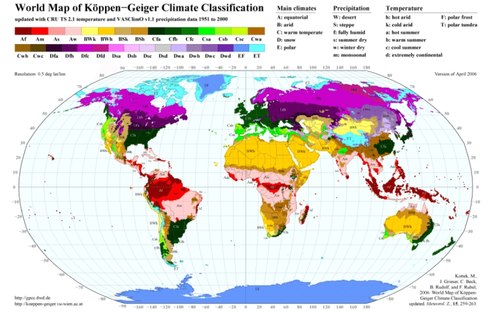
Understanding and Managing Climate-Driven Risks
Electronic systems are often deployed in environments far less forgiving than a clean, temperature-controlled lab. In fact, sometimes they are required to perform in some of the harshest climates around the globe. From the persistent humidity of the tropics to the brittle cold of the Arctic, and the dry, abrasive heat of the desert, each of these extreme climates presents its own challenges to long-term reliability. Understanding how these extremes impact electronic components is critical, not just for identifying potential points of failure but also for planning effective protection strategies. In this blog, we will discuss the challenges and potential solutions for success in these climatic conditions.
Tropical Climates: Navigating Humidity and Heat
In tropical regions, electronics are consistently subjected to a combination of high temperatures and sustained humidity. Together, these environmental factors create ideal conditions for component degradation.
- Corrosion Accelerates: Moisture and heat are a recipe for corrosion, particularly when it comes to metal surfaces like connectors, leads, and exposed circuitry. As corrosion builds up, it interferes with electrical conductivity, compromising electrical connections and potentially leading to partial or complete failure of the device.
- Moisture Intrusion: Even well-sealed enclosures can struggle to keep out moisture in humid environments. When moisture infiltrates these enclosures, it can cause leakage currents and/or short circuits by creating conductive paths where none should exist. These sensitive electrical components are vulnerable, as even small amounts of water can degrade insulation and cause malfunctions.
- How to Mitigate: Performing rigorous testing before sending your electronic assemblies in this kind of climate is key. At Magnalytix, we use Surface Insulation Resistance (SIR) testing to assess how electronic assemblies perform in humid, high-temperature conditions using finely controlled environmental chambers. With the ability to simulate tropical climates in a controlled setting, SIR testing can help identify which parts of a design are most vulnerable to corrosion, so issues can be addressed before the product is deployed in the field.
Arctic Climates: Withstanding the Cold
Alternatively, Arctic climates introduce an opposite set of stressors. Sub-zero temperatures can impact the mechanical integrity of materials and, if there's any moisture in the air, the behavior of condensed air as frost or ice.
- Material Brittleness: Some materials—especially certain plastics and metals—become brittle at low temperatures. That brittleness increases the likelihood of cracks forming in housings, connector shells, or solder joints, particularly during handling or thermal cycling.
- Condensation on Warm-Up: Bringing a cold device into a warmer environment can lead to rapid condensation forming on internal components. That condensation can cause corrosion or even damage and short sensitive components if exposed to moisture.
- How to Mitigate: Our approach at Magnalytix involves using test data to identify failure points. With that data, we can work with clients to adapt their designs or materials for better performance in extreme cold.
Desert Climates: Combating Heat and Dust
The arid heat of desert environments during the daytime and cool temperatures at night introduce significant thermal variation. Along with a constant presence of fine dust, these aspects can wear down electronic systems in different ways.
- Overheating and Thermal Degradation: High ambient temperatures strain components by increasing their internal operating temperatures. This can speed up the breakdown and oxidation of solder joints or even trigger thermal shutdowns and permanent damage in active electronics.
- Dust Infiltration: Dust may seem harmless, but fine particles can work their way into enclosures and settle onto circuit boards. This can reduce cooling efficiency, abrade sensitive surfaces, and even cause electrical shorts when conductive particles bridge exposed traces.
- How to Mitigate: Magnalytix can help identify areas in a design that are vulnerable to dust-related performance degradation. With SIR testing, Magnalytix can help inform design changes, such as enhanced PCB coatings, that can significantly extend system reliability in dusty, high-temperature environments.
Final Thoughts: Designing for Reliability, Wherever You Deploy
Every extreme climate presents its own set of reliability challenges. From high heat and humidity to sub-zero temperatures and hot, dusty environments, electronic systems require thoughtful design and rigorous testing to ensure their longevity.
At Magnalytix, we're focused on helping engineers and system designers uncover weak points before they become failures. By simulating real-world environmental stress in the lab and providing actionable insights based on test results, we can help build systems that endure, no matter where they're deployed.
If you're working with electronics in extreme environments and want to be sure your systems are up to the challenge, reach out to us. Let's build reliable solutions together.